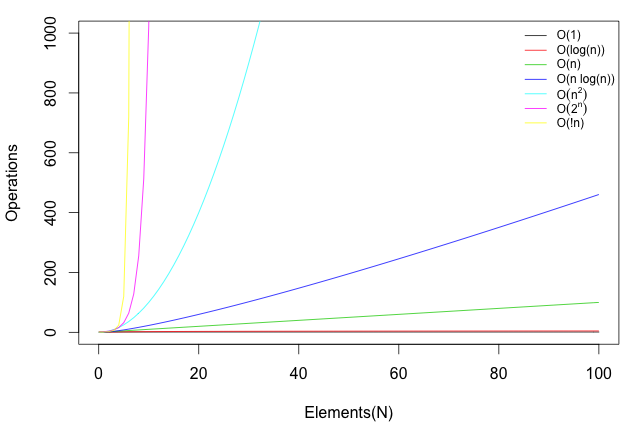I needed an original Big-O chart for a publication. This tutorial does not cover what
Big-O actually is, just how to chart it. If you want more information on Big-O I
recommend reading this and this. I know, go figure, for a computer science student. I
really like using R for all things chart and visualization. So, I turned to R for this
task. While this is a very simple chart, it does demonstrate several very common
tasks in R:
- Overlaying several plots
- Adding a legend to a plot
- Using “math symbols” inside of the text on a chart
- Stripping off all the extra whitespace that R likes to generate
You can see the end-result here:

This was produced with the following R code:
1 | # Remove white space on chart |